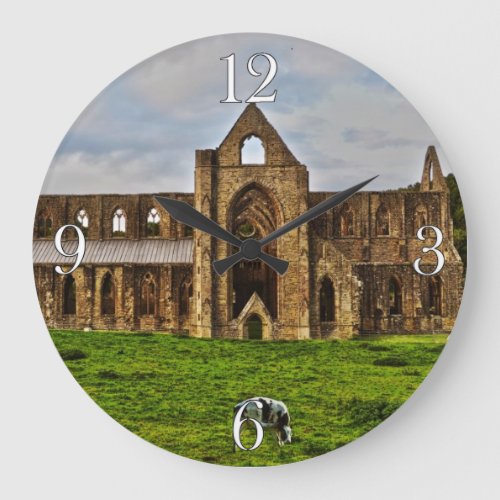Tintern Abbey, Cistercian Monastery, Wales Large Clock



"Tintern Abbey (Welsh: Abaty Tyndyrn) was founded by Walter de Clare, Lord of Chepstow, on 9 May 1131. It is situated in the village of Tintern in Monmouthshire, on the Welsh bank of the River Wye which forms the border between Monmouthshire in Wales and Gloucestershire in England. It was only the second Cistercian foundation in Britain, and the first in Wales. It inspired William Wordsworth's poem "Lines written a few miles above Tintern Abbey", Alfred, Lord Tennyson's poem "Tears, Idle Tears", Allen Ginsberg's "Wales Visitation", and more than one painting by J. M. W. Turner. The village of Tintern adjoins the abbey ruins which are Grade I listed as of 29 September 2000." Source: http://en.wikipedia.org/wiki/Tintern_Abbey Walter de Clare, of the powerful family of Clare, was related by marriage to William Giffard, Bishop of Winchester, who had introduced the first colony of Cistercians to Waverley, Surrey in 1128. The monks for Tintern came from a daughter house of Cîteaux, L'Aumône, in the diocese of Blois in France. In time, Tintern established two daughter houses, Kingswood in Gloucestershire (1139) and Tintern Parva, west of Wexford in south east Ireland (1203). The Cistercian monks (or White Monks) who lived at Tintern followed the Rule of St. Benedict. The Carta Caritatis (Charter of Love) laid out their basic principles, of obedience, poverty, chastity, silence, prayer, and work. With this austere way of life, the Cistercians were one of the most successful orders in the 12th and 13th centuries. The lands of the Abbey were divided into agricultural units or granges, on which local people worked and provided services such as smithies to the Abbey. Many endowments of land on both sides of the Wye were made to the Abbey. Photography by Skye Ryan-Evans ©.


